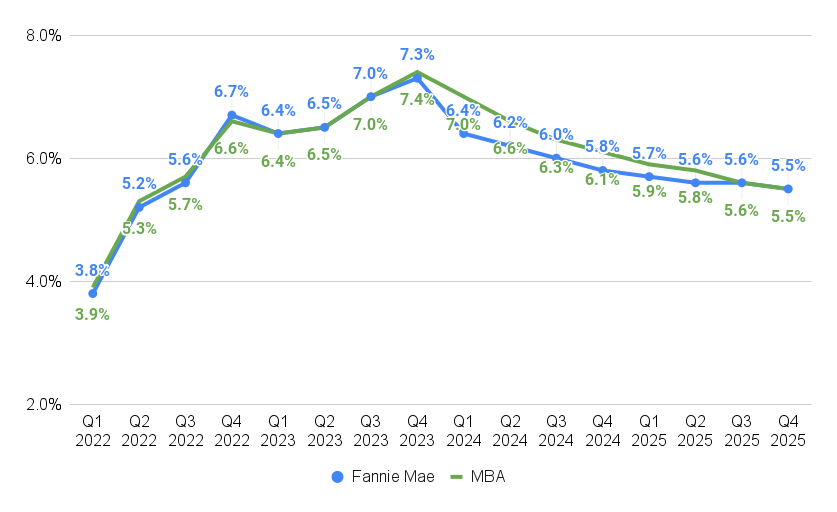
As the financial world turns its collective gaze towards 2024, the buzz around mortgage rates intensifies. The question on everyone’s mind is straightforward yet complex: Will we witness a downturn in mortgage rates? In a style that mirrors Neil Patel’s depth of analysis and engaging delivery, let’s dissect the factors that will shape mortgage rates in the year ahead. Keeping “mortgage” as our keyword, we will navigate through the intricate tapestry of economic signals, policy shifts, and market behaviors to understand the potential for declining mortgage rates in 2024.
Economic Indicators: The Harbingers of Rate Trends
A robust forecast of mortgage rates begins with a keen understanding of economic indicators. Inflation, GDP growth, employment statistics, and consumer spending habits offer a snapshot of the economy’s vigor and directly impact the ebb and flow of mortgage rates. Traditionally, surging inflation triggers central banks to increase interest rates to cool down the economy, potentially nudging mortgage rates upward. However, if economic growth shows signs of deceleration, a reduction in interest rates might be enacted to stimulate spending and investment, potentially lowering mortgage rates. As we edge closer to 2024, these economic signposts will be critical in gauging the mortgage rate trajectory.
The Federal Reserve’s Stewardship
The Federal Reserve’s monetary policies are pivotal in charting the course for mortgage rates. Through its manipulation of the federal funds rate, the Fed influences borrowing costs, indirectly setting the stage for the direction of mortgage rates. A cautious or dovish posture from the Fed, possibly in response to an uneven economic recovery or contained inflation, could signal a descent in mortgage rates. Financial analysts and homebuyers alike will be parsing every Fed announcement for insights into 2024’s mortgage rate climate.
Global Economic Climate: Beyond Domestic Shores
Our globalized financial system means that shocks and shifts in the international arena can reverberate within domestic mortgage rates. Economic volatility, trade negotiations, and political upheaval abroad can lead to a cascade of effects that filter through to the U.S. bond market, influencing mortgage rates. A global tilt towards American treasuries, often seen as a haven during uncertainty, could exert downward pressure on mortgage rates. Thus, a panoramic view of global economic health is indispensable for those forecasting 2024’s mortgage rates.
Housing Market Pulse: A Determinant of Demand
The supply-demand dynamics of the housing market also weigh heavily on mortgage rate determination. A heightened demand for housing against a backdrop of limited supply can drive mortgage rates up, while a glut in housing or waning demand could induce lenders to lower rates to incentivize buyers. Observing housing market trends will be crucial for predicting mortgage rate shifts in 2024.
Technological Advancements: The Digital Disruption
The accelerating pace of digital innovation in the mortgage industry presents both opportunities and challenges for traditional mortgage rate structures. Technological advancements streamline the lending process, potentially reducing costs for financial institutions and increasing competition, which could lead to more favorable mortgage rates. As the industry adapts to these digital advancements, their potential to impact 2024 mortgage rates warrants careful consideration.
Regulatory Environment: The Framework for Rates
The regulatory landscape that governs lending and housing policy is another significant factor that can alter mortgage rates. New legislation or adjustments to existing financial regulations can either constrict or ease the flow of mortgage credit, affecting rates. For those seeking to predict 2024 mortgage rates, understanding the trajectory of regulatory changes is essential.
Consumer Confidence: The Real-Time Gauge
Consumer sentiment is a real-time gauge of market conditions and future mortgage rates. An upswing in mortgage applications or refinancing indicates consumer optimism, potentially stabilizing or pressing down on rates. Keeping a pulse on consumer sentiment is vital for a comprehensive mortgage rate forecast.
Conclusion: Anticipating the Mortgage Landscape of 2024
As we cast our predictions forward, the 2024 mortgage rate outlook appears as a complex forecast, subject to an array of influencing factors. Economic indicators, Federal Reserve policy, global economic conditions, housing market dynamics, technological innovation, regulatory changes, and consumer behavior all interplay to shape the mortgage rate trends of the future.
Mirroring Neil Patel’s analytic approach, a multifaceted analysis combining data with narrative, we can navigate through the complex economic and regulatory terrain to anticipate potential mortgage rate changes. For industry professionals, homebuyers, and investors, staying well-informed and adaptable is critical to making savvy decisions in a fluctuating rate environment.
While the exact direction of mortgage rates in 2024 cannot be known with absolute certainty, a strategic examination of the factors at play equips us with the foresight to plan for a range of outcomes. By keeping abreast of both macroeconomic trends and granular market shifts, stakeholders can be poised to respond effectively to whichever direction the mortgage rate winds may blow.


